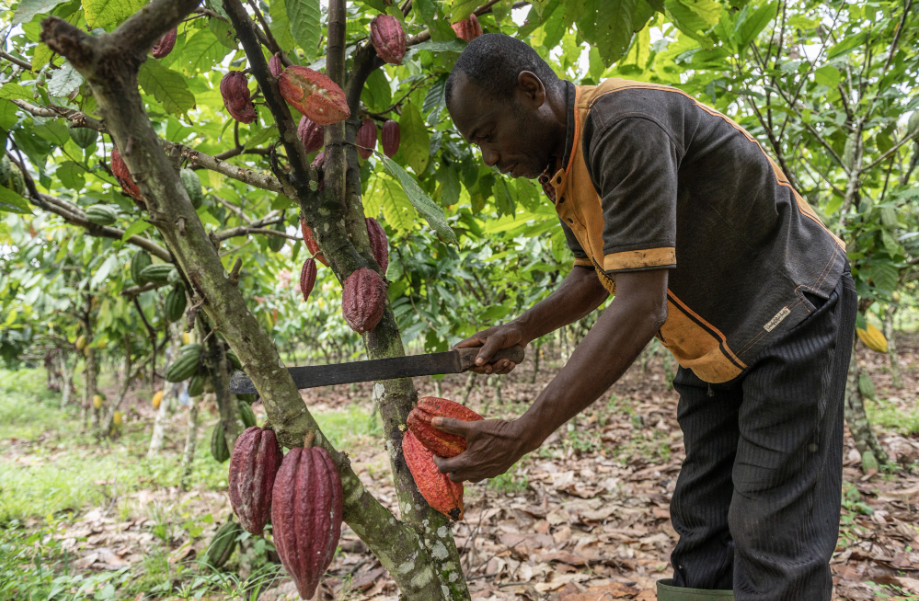Easter chocolate prices skyrocket in the U.S. as cocoa shortage and tariffs hit hard, creating a nationwide price shock for shoppers ahead of the 2025 holiday. With soaring production costs and tightening global supply chains, Americans are paying record-high prices for their favorite seasonal treats—and the reasons behind it reveal deeper problems in the global economy.
Understanding the Real Reasons Behind Soaring Chocolate Prices
This isn’t just a seasonal spike. The price of chocolate is skyrocketing due to two major factors:
- Record-high global cocoa prices
- New tariffs imposed by the U.S. government
These pressures are being passed directly onto consumers by chocolate manufacturers and retailers, leading to noticeable price hikes and reduced product sizes across the board.
Why Cocoa Prices Are at Record Highs in 2025
Cocoa, the core ingredient in chocolate, has become one of the most volatile agricultural commodities this year.
Here’s what’s happening:
| Year | Average Global Cocoa Price (per metric ton) |
|---|---|
| 2022 | $2,500 |
| 2023 | $3,400 |
| 2024 | $8,200 |
| 2025 | $12,100 (peak in April) |
The 400% increase in cocoa prices is caused by:
- Failed harvests in Ghana and Ivory Coast, which supply over 70% of the world’s cocoa
- Droughts and floods caused by climate change
- Widespread outbreaks of the swollen shoot virus
- Aging trees and lack of replanting programs
These issues have created a global supply deficit of over 400,000 tons, triggering record-breaking prices. This situation is not expected to improve until 2027 or later, as cocoa trees take years to mature.
U.S. Tariffs on Imported Chocolate: The Hidden Cost Hike
In 2025, the U.S. government introduced new trade tariffs on a range of imported goods, including cocoa and chocolate products. While the intent was to protect domestic producers, the real result is a steep rise in prices for U.S. shoppers.
Here’s how tariffs are affecting chocolate in the U.S.:
- Import costs on chocolate have risen by 20% to 35%
- U.S. chocolate companies like Hershey and Mars have increased shelf prices
- Smaller chocolatiers are struggling or shutting down
A recent report from The Guardian estimates that these tariffs could cost the average U.S. household up to $4,900 annually across all goods—not just chocolate.
Shrinkflation: How You’re Getting Less Chocolate for More Money
Manufacturers have responded to rising costs with a strategy called shrinkflation—reducing product size while maintaining or increasing the price.
Here’s a clear comparison:
| Product | 2023 Size | 2025 Size | Price Change |
|---|---|---|---|
| Classic Chocolate Bunny | 150g | 120g | +18% |
| Chocolate Egg Multipack | 6 pieces | 5 pieces | +15% |
| Assorted Chocolate Box (Deluxe) | 20 pcs | 16 pcs | +20% |
This approach hides inflation from casual shoppers, but informed buyers are noticing—and they’re not happy about it.
Core Factors Behind U.S. Chocolate Price Spike in 2025
Here’s a quick overview to make the connection easier to understand:
[Easter Chocolate Prices Soar]
/ \
[Cocoa Crisis] [U.S. Tariffs]
/ | \ / \
Climate Virus Aging Import Cost Retail Prices
Impact Outbreak Farms Spike Up Pass to Buyers
This map visually breaks down the two major forces causing today’s chocolate price crisis—and how they lead directly to what consumers see in stores.
How Americans Are Changing Their Easter Habits
Due to the rising costs, many families in the U.S. are cutting back on Easter spending, particularly on chocolate and candy gifts.
Recent data shows:
- 41% of households are reducing chocolate purchases
- 29% are switching to home-baked alternatives
- 12% drop in premium chocolate gift basket sales this Easter
Retailers are also adjusting, promoting alternative products like jelly beans, cookies, and even small toys over traditional chocolate-centric Easter items.
The Impact on Chocolate Companies and Small Businesses
Big chocolate brands like Hershey have managed to stay afloat by hiking prices, but smaller companies are facing devastating losses.
Key impacts on the chocolate industry:
- Low-income families and local businesses are hit hardest
- Chocolate factories in states like New Jersey and Pennsylvania are downsizing
- Labor shortages are pushing up operating costs across the sector
Some boutique brands that relied on seasonal Easter revenue have already announced closures or temporary halts in production.
Will Prices Come Down Anytime Soon?
Unfortunately, industry experts agree: not anytime soon.
Factors pointing toward sustained high prices include:
- The long lifecycle of cocoa trees (5–7 years to maturity)
- Persistent climate instability in cocoa-growing regions
- Increased global demand despite shrinking supply
- Lack of substitute ingredients for cocoa in traditional chocolate
Until long-term agricultural and trade reforms are implemented, prices are likely to remain high throughout 2025 and into 2026.
Conclusion: A New Era of Expensive Chocolate
Easter chocolate prices skyrocket in the U.S. in 2025 due to a historic cocoa shortage and new tariffs, creating a ripple effect across the supply chain, grocery stores, and consumer wallets.
From smaller bunnies to higher prices and limited supply, Americans are feeling the effects in real time. Unless serious climate and trade reforms are made, chocolate may remain a luxury item for years to come.
[USnewsSphere.com / tg]





